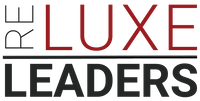If you’re leading a luxury real estate team, you already know revenue isn’t consistent. Market swings, high-ticket listings lost, delayed closings — these all threaten your cash runway. Managing cash flow in luxury real estate is not a “nice-to-have” skill; it’s your survival mechanism amid market volatility.
Luxury real estate cash flow management is often treated like an afterthought by many teams chasing listings and deals without a financial backbone. That’s how teams burn out or collapse when deals dry up. This article cuts through the noise and lays out a battle-tested, data-driven system for building real estate team financial resilience while scaling profitably with confidence.
Why Traditional Cash Flow Approaches Fail Luxury Real Estate Teams
Most luxury brokerage budgeting tactics mimic standard small business accounting but fail to address the unique spikes and troughs of high-end real estate cycles. You won’t find months of consistent commissions like volume-based agents, and your overheads are heavier — premium marketing, seasoned staff, and complex legal risks demand liquidity.
Common pitfalls include underestimating operating reserves, no contingency for market dips, and neglecting revenue diversification strategies. As a result, luxury teams scramble for cash or lean too heavily on credit lines, inflating debt management luxury real estate teams must handle later.
In fact, HousingWire’s 2024 report highlights that even top-performing brokerages are vulnerable without cash flow forecasting tools for brokerages tuned to high transaction value but low frequency cycles.
Introducing the 3-Tier Reserve System for Real Estate Team Financial Resilience
The cornerstone of robust luxury real estate cash flow management is a disciplined reserve system built around three tiers. This system is designed to weather market volatility and gives your team a financial fortress instead of a fragile stack of dominoes.
Tier 1: Operational Cash Reserve
- Holds 3–6 months of fixed operating expenses — think payroll, office rent, marketing commitments, software subscriptions.
- Serves as your immediate liquidity buffer, ensuring no disruption when deals close late or unexpected expenses arise.
- Fund by siphoning a fixed % of each commission check into a dedicated account until the target is hit.
Tier 2: Opportunity Fund
- Allows seizing market opportunities — high-ROI marketing pushes, selective hiring, or strategic acquisitions without external funding.
- Holds 1–2 months of discretionary budget, separate from operational costs.
- Can also double as a buffer against short-term market downswings during high seasonal fluctuations.
Tier 3: Crisis & Growth Capital
- Biggest reserve for “black swan” events — rapid market downturns, regulatory impacts, or major client defaults.
- Should hold a minimum of 6 months of total projected expenses to truly safeguard the team’s survival.
- Often funded from retained profits after hitting Tier 1 and Tier 2 milestones.
Implementing this system requires exact budget tracking, forecast modeling, and most importantly, strict discipline to avoid borrowing prematurely. Using scenario planning real estate teams rely on, this reserve structure ties directly into call every financial decision and runway calculation.
Quantitative Benchmarks for Monitoring Luxury Real Estate Cash Flow Health
Effective luxury real estate cash flow management demands granular KPIs. We recommend these real-world benchmarks based on data from industry leaders and your peers in the luxury market segment:
- Operating Expense Ratio: Keep fixed expenses below 30% of gross commissions. Anything higher signals unsustainable overhead.
- Reserve Coverage Ratio: Your combined reserves (Tiers 1–3) should cover at least 9 months of operating expenses.
- Revenue Concentration Index: No single client or agent should generate more than 25% of total revenue—diversify listings and agents.
- Cash Conversion Cycle: Time from contract signing to cash received should average under 60 days.
Tracking these closely prevents the cascade of surprises that saw teams flounder during recent market turbulence, as confirmed in Inman’s market trends analysis.
Case Study: How a 15-Agent Luxury Team Increased Margins 20% Using Cash Flow Strategies
One RE Luxe Leaders™ client recently shared their transformation applying this 3-tier reserve system combined with stringent cash flow forecasting and targeted expense control. Pre-implementation, their monthly burn was erratic with insufficient reserves, causing constant stress and lost opportunities.
Within 18 months, they implemented monthly financial reviews, took ownership of reserve targets per commission, and introduced scenario planning real estate teams need to prepare for volatility. The result: reserves grew to cover 10 months, operational expenses shrank by 12%, and net margins improved by 20% despite a 15% revenue dip during a localized market slowdown.
They recruited a financial-savvy operations manager focused purely on cash flow metrics and brought finance into weekly leadership meetings, bridging the gap between sales leadership and accounting—a critical integration tactic linking cash flow strategy to scalable team leadership.
Recruiting and Retaining Financially Savvy Team Members
Luxury real estate cash flow management cannot rest on the shoulders of leadership alone. Elite teams now actively seek candidates with finance or operations expertise. These members serve as translators between the numbers and sales strategies, ensuring budgeting tactics and cash flow plans are operationalized.
Hiring profiles need to include:
- Strong understanding of cash flow forecasting tools for brokerages and scenario planning.
- Proven track record of managing budgets in volatile markets or cyclical businesses.
- Capacity for data-driven decision making and real-time financial problem solving.
Retention is equally important — provide these key players with growth pathways and ownership of financial systems so you evolve beyond founder-dependent financial chaos.
Consolidating a Cash Flow Fortress Amid Real Estate Market Volatility
Market volatility is not going away. Whether it’s rising interest rates, shifting buyer preferences, or regulatory changes, the only path for luxury real estate teams is not just reacting but proactively engineering financial resilience. Building and maintaining an unbreakable cash flow system protects deal flow disruptions, enables smart scaling, and preserves your sanity as a leader.
It’s no accident that teams with disciplined luxury real estate cash flow management are the ones who emerge stronger and more competitive year over year. They invest in reserves, measure with precision, diversify revenue, and recruit finance-savvy talent who get the stakes.
For a deeper dive into market conditions affecting your cash flow strategies, visit Wall Street Journal Real Estate for rigorous, up-to-the-minute coverage.
Conclusion
Luxury team leadership means mastering the messy, relentless realities of cash flow — not blindly chasing listings or adding agents. Your legacy and profitability depend on building financial systems that survive and thrive through market volatility. The 3-tier reserve system is a blueprint, but execution demands discipline and expertise.
Leadership is not martyrdom. It’s a series of strategic decisions that protect your business, your team, and your future. Master luxury real estate cash flow management now or risk losing control later.
Book a confidential strategy call with RE Luxe Leaders™ and start building your unbreakable cash flow fortress today.






